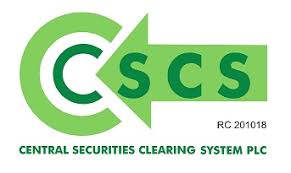7GT Bank’s 2018 PBT guidance of N205bn implies PBT growth of just 2.4% (excluding recoveries). If that figure is achieved, it would mark the weakest year of PBT growth since 2010, although close to the 4% in 2013 and 2015.
In the last two years, the bank has surpassed its (minimum) PBT guidance handsomely, by 32% in 2016 and 19% in 2017. We believe 2018 is likely to be closer to the 2014-15 period when the bank met or only slightly beat expectations. Management stated on the earnings call that it is confident that fees will grow by 20% to replace significant fx-revaluation gains which boosted 2017 PBT. Notwithstanding, the guidance supports an ROAE of >25%, making the bank one of the most consistent on this metric. We are encouraged to see an attempt to offset pressure on NIMs with loan growth(guid. of 10% vs -9% in 2017).
Concerns regarding a doubling in the NPL ratio to 7.7% in 2017 are tempered by the fact that this was driven by just one exposure (9mobile, for which a 30% provision has been taken), and a coverage ratio (group) of > 100%. An additional 20-30% charge on 9mobile is likely in 2018, but this will be charged straight to equity. We have cut our 2018-19E earnings forecasts by around 7% to leave them close to the bank’s guidance, and our price target by a similar percentage to N46.0, close to where the shares are trading. We retain our Neutral recommendation.
Strong double-digit growth in Q4 2017 PBT
GT Bank’s Q4 2017 PBT grew by 85% y/y to N50.2bn. Although non-interest income which grew by 736% was the main driver behind the strong earnings growth, a 54% y/y decline in loan loss provisions also helped. Funding income declined by -9% y/y.
However, the strong performance in non-interest income completely offset the weakness here, resulting in a 31% y/y expansion in pre-provision profits. Further down the P&L, PAT grew even faster at 227% y/y, due to a -56% reduction in income tax (tax rate of 10.6% compares with 44.0% in Q4 2016) and a significant increase in other comprehensive income (OCI); the latter was mainly driven by fair value gains on available for sale securities. Sequentially, while PBT was up by around 3% q/q, PAT grew by 16% q/q, thanks to the positives on the tax and OCI lines. Compared with our forecasts, PBT beat by 20% largely because of the positive surprises in non-interest income and loan loss provisions.
However, the surprise on the PAT line was greater at 73% because of the positive surprises in tax and OCI (for which we had no forecast). Our PBT forecast was close to consensus.













